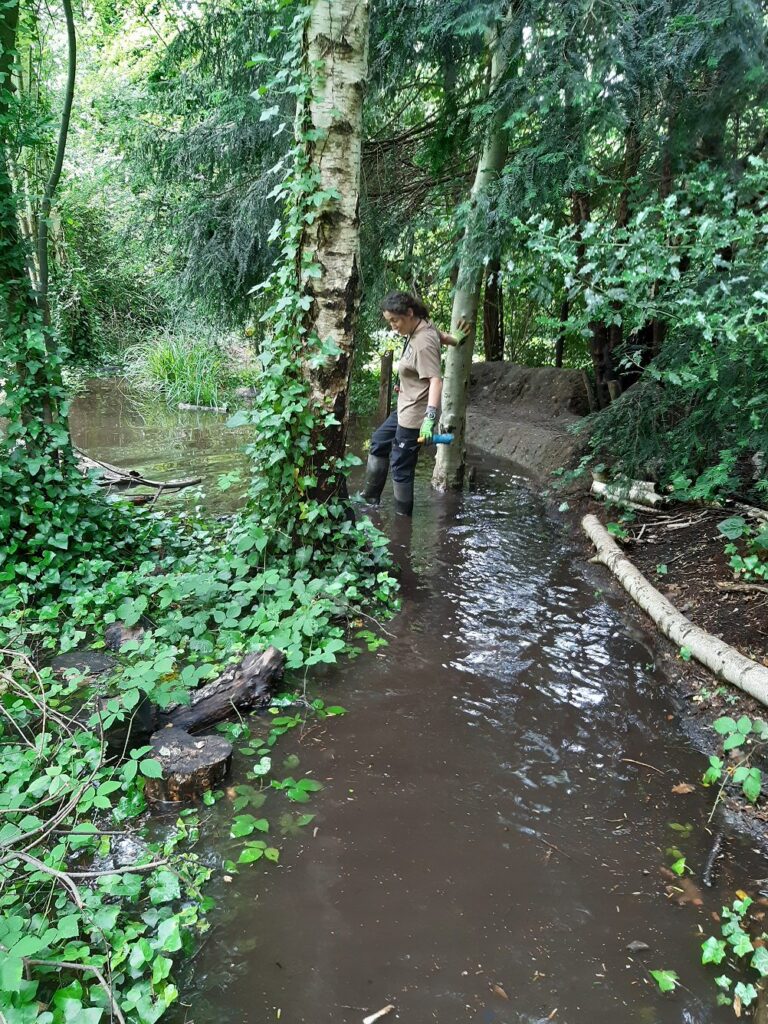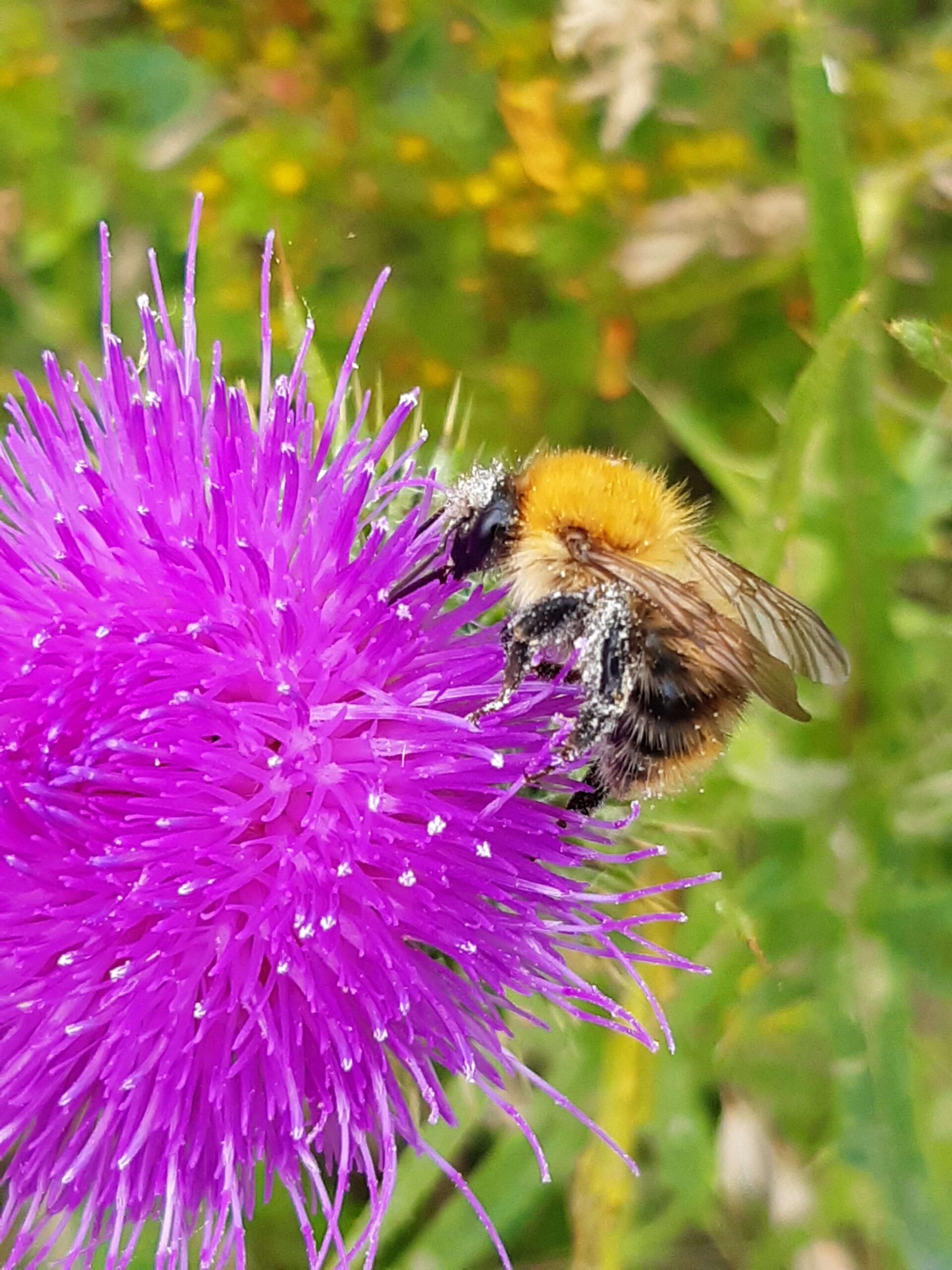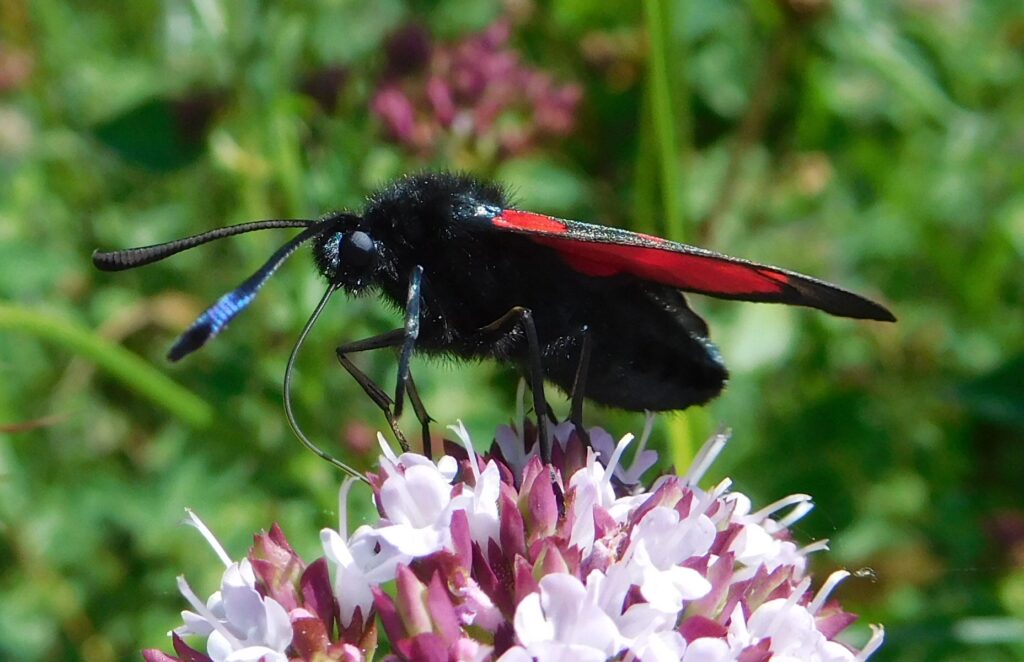
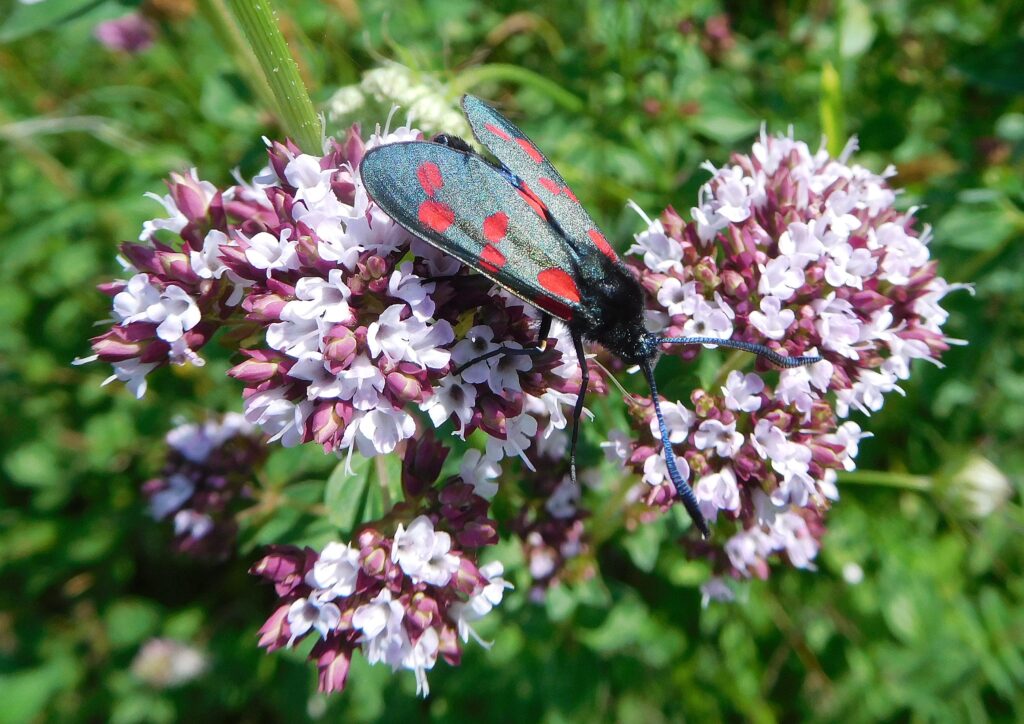
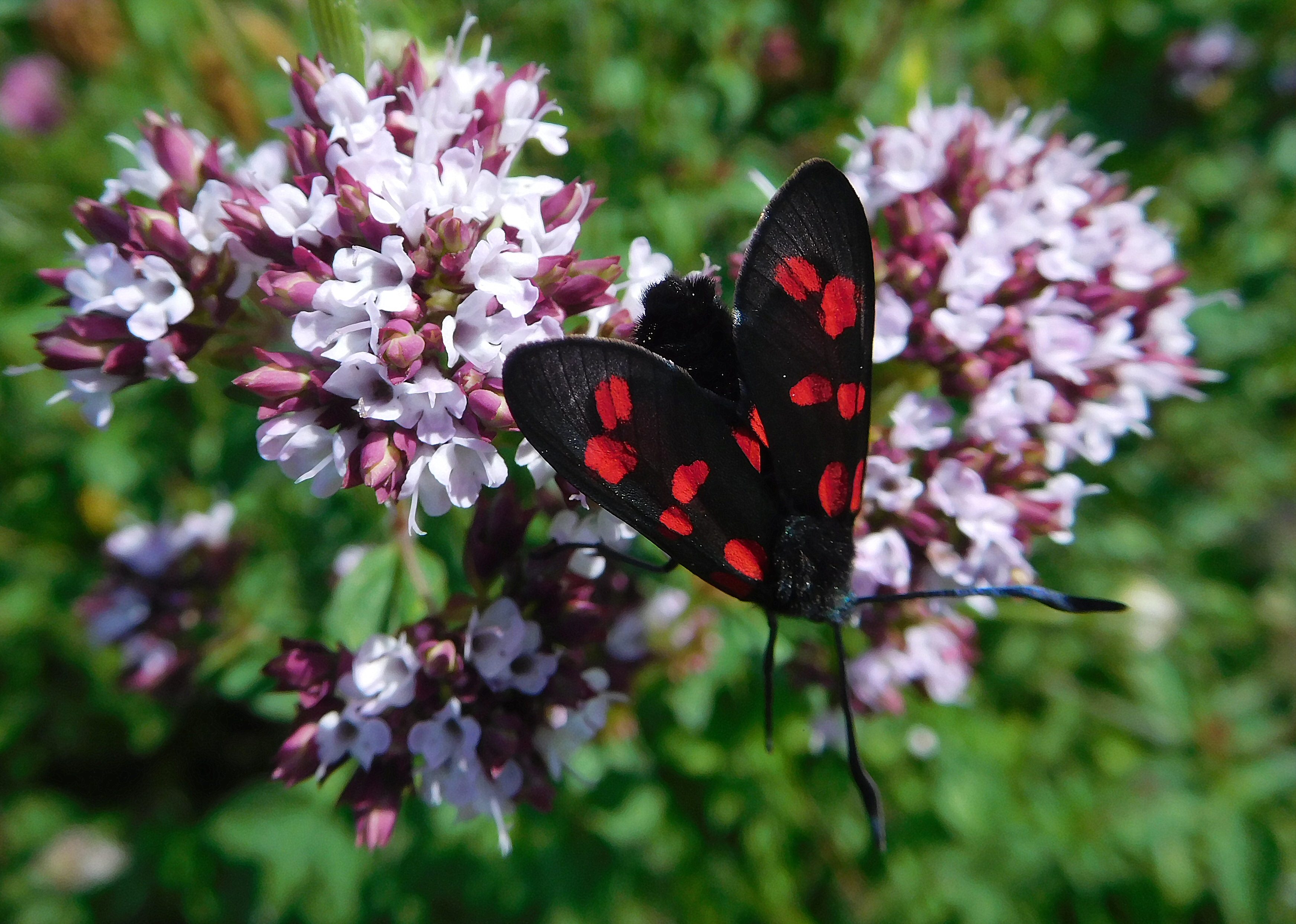
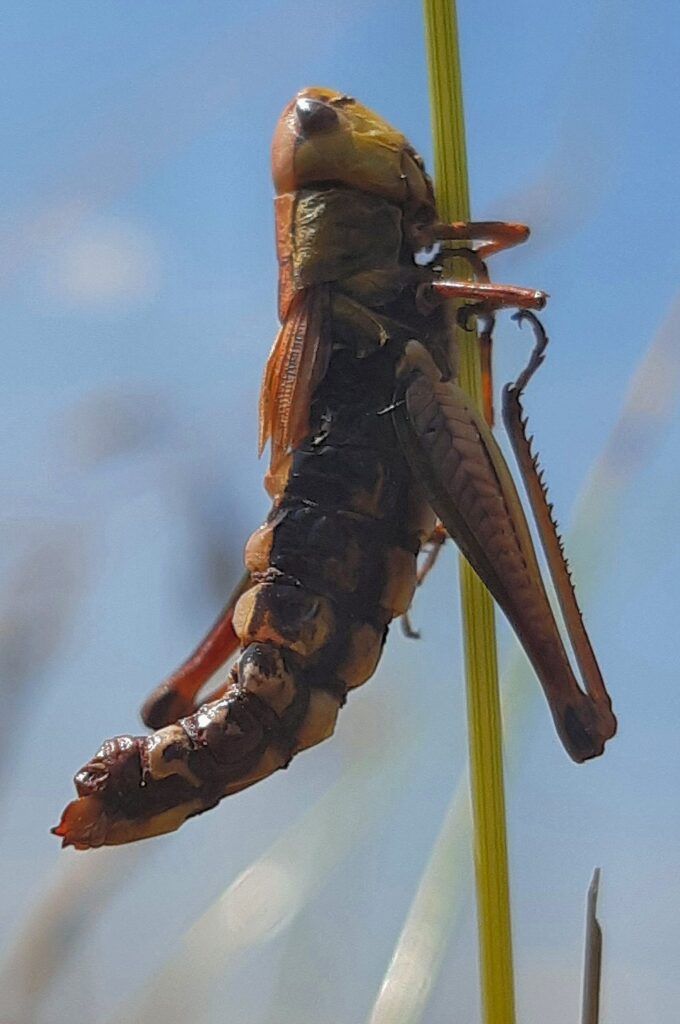
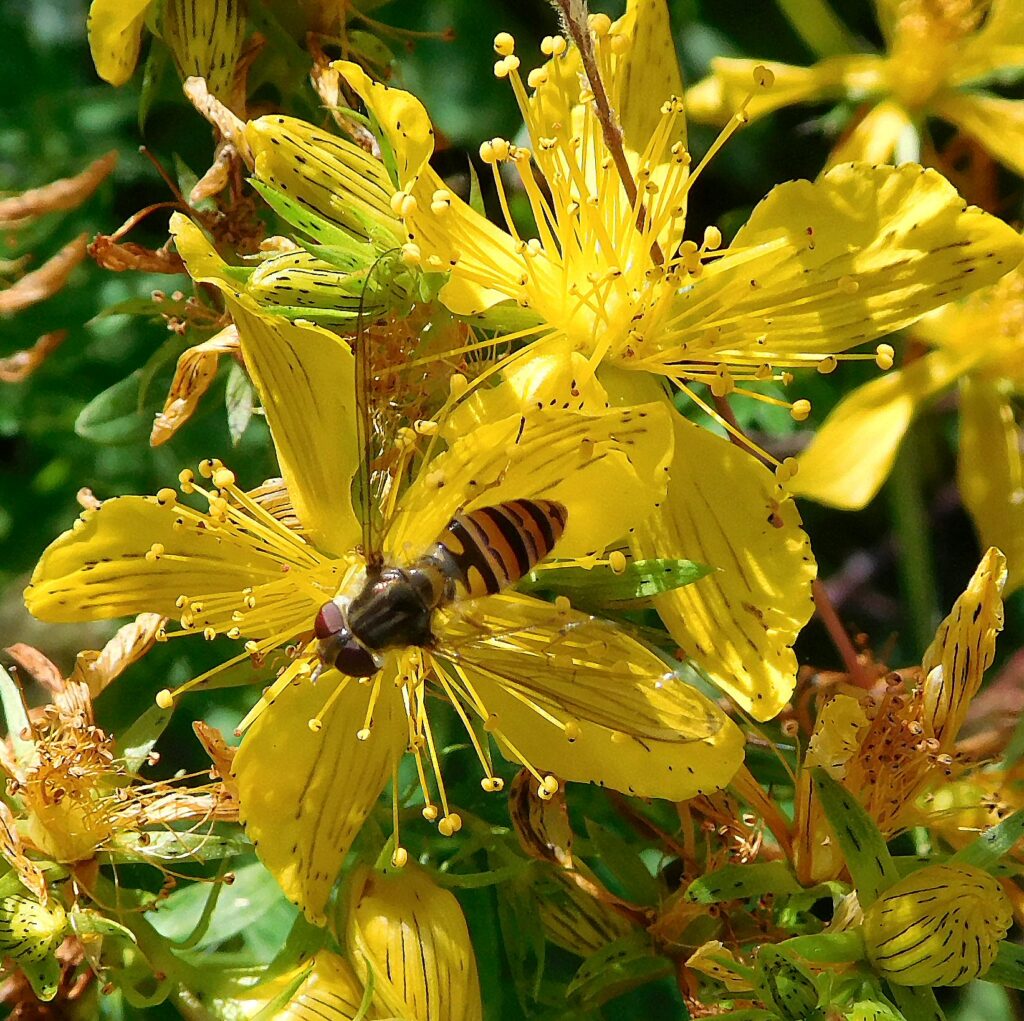
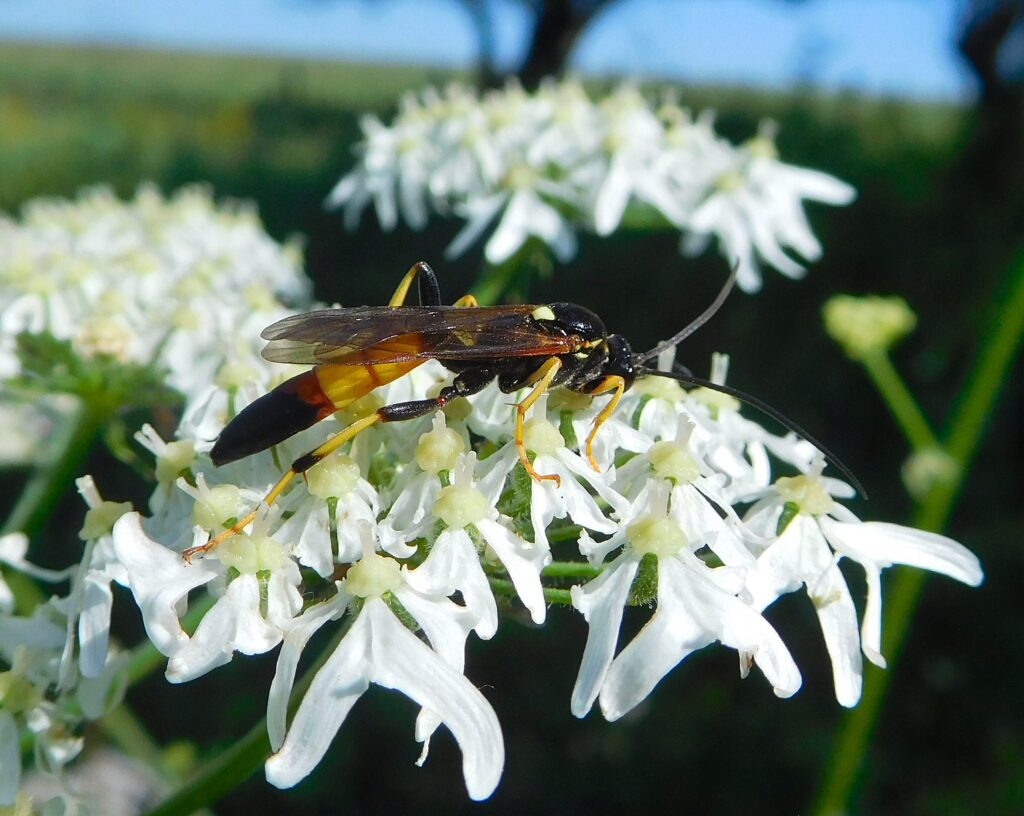
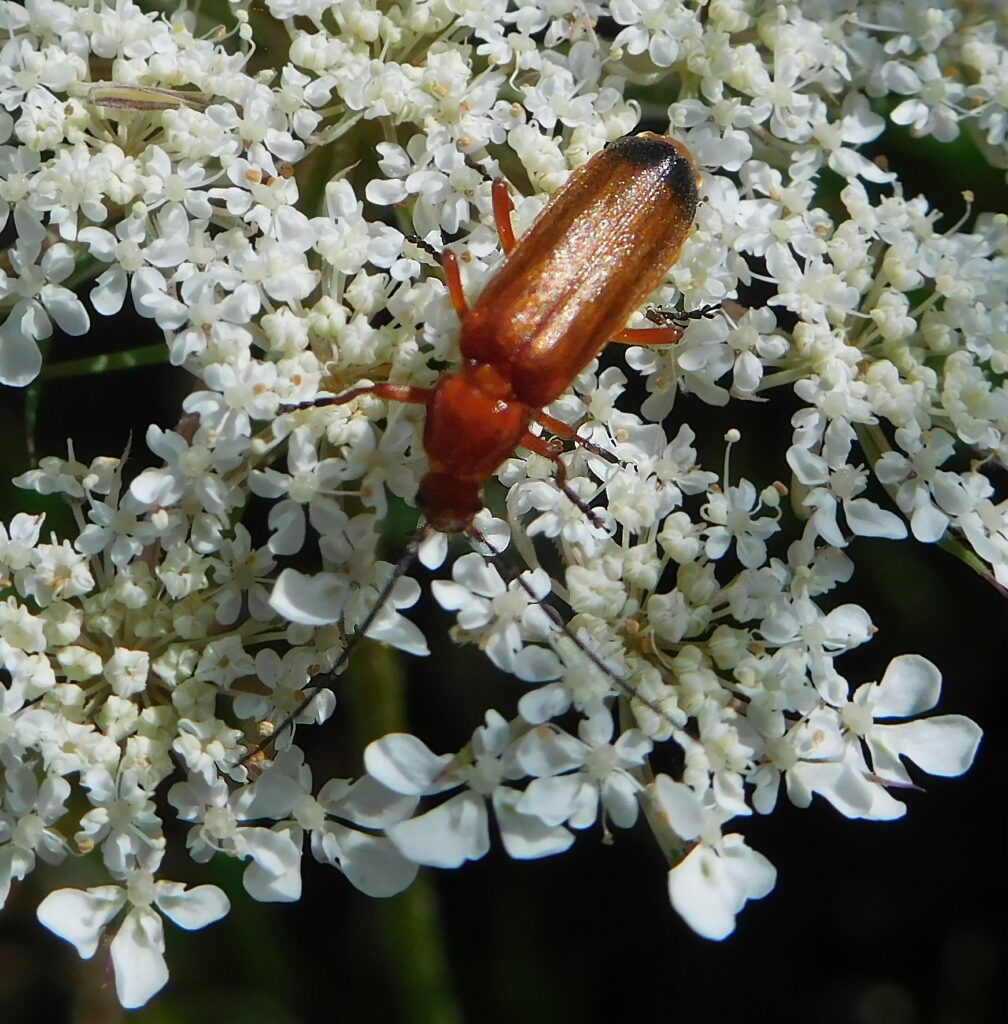
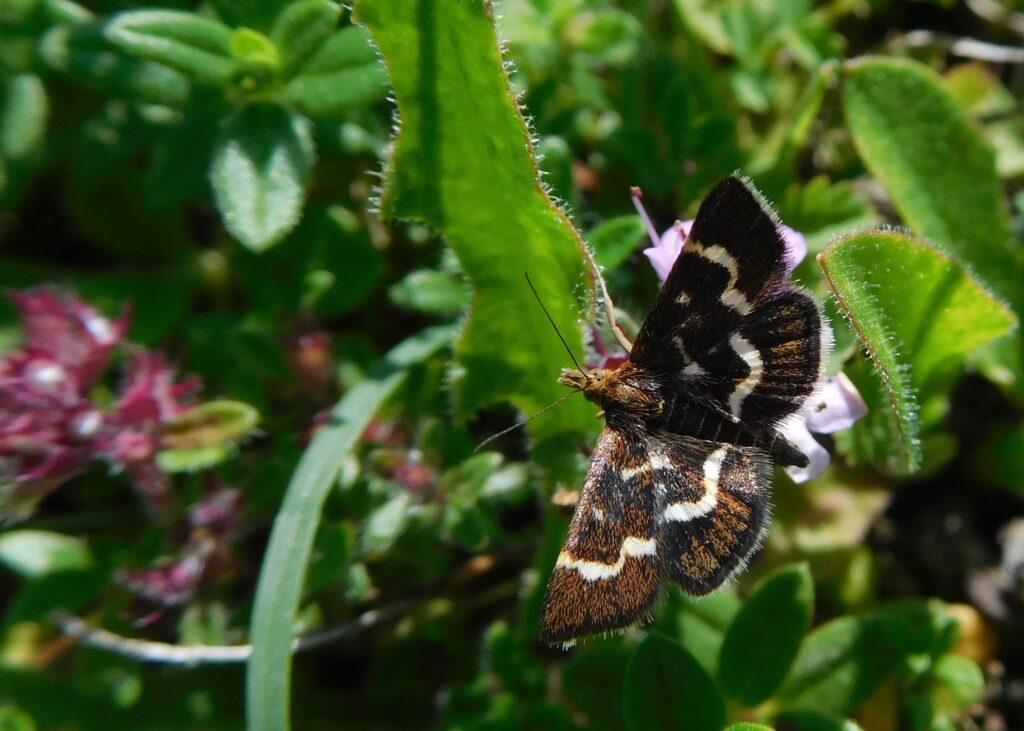
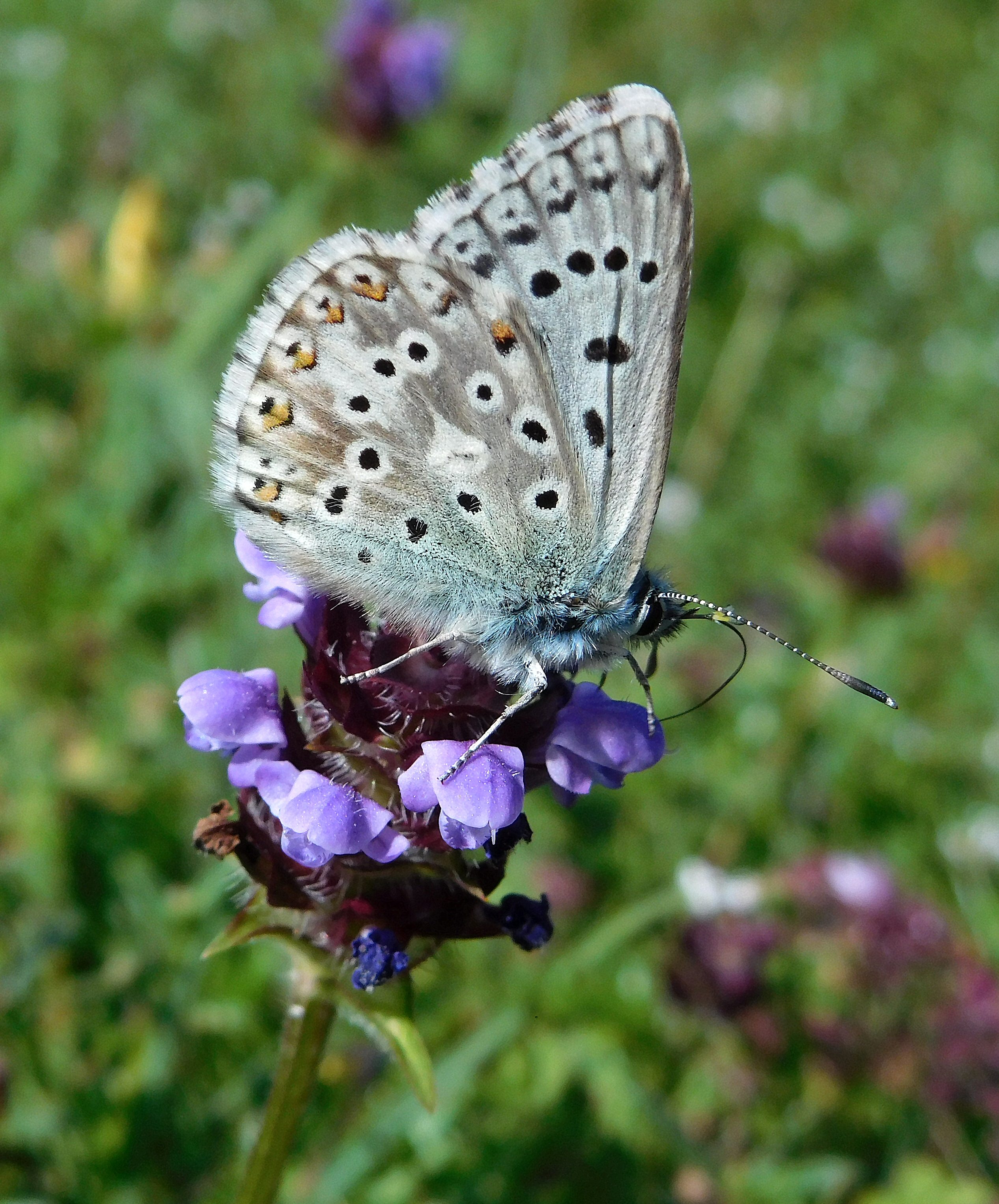
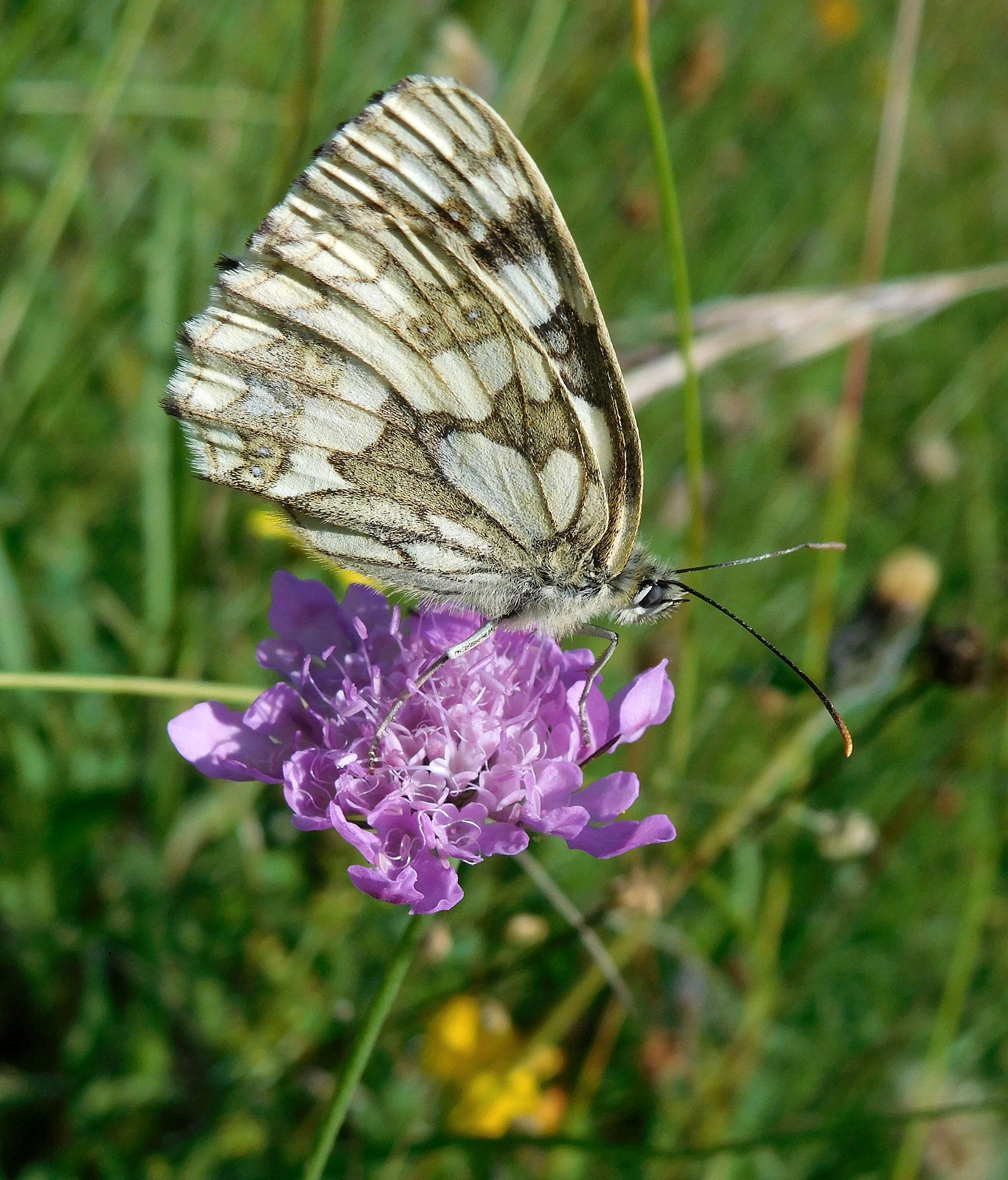
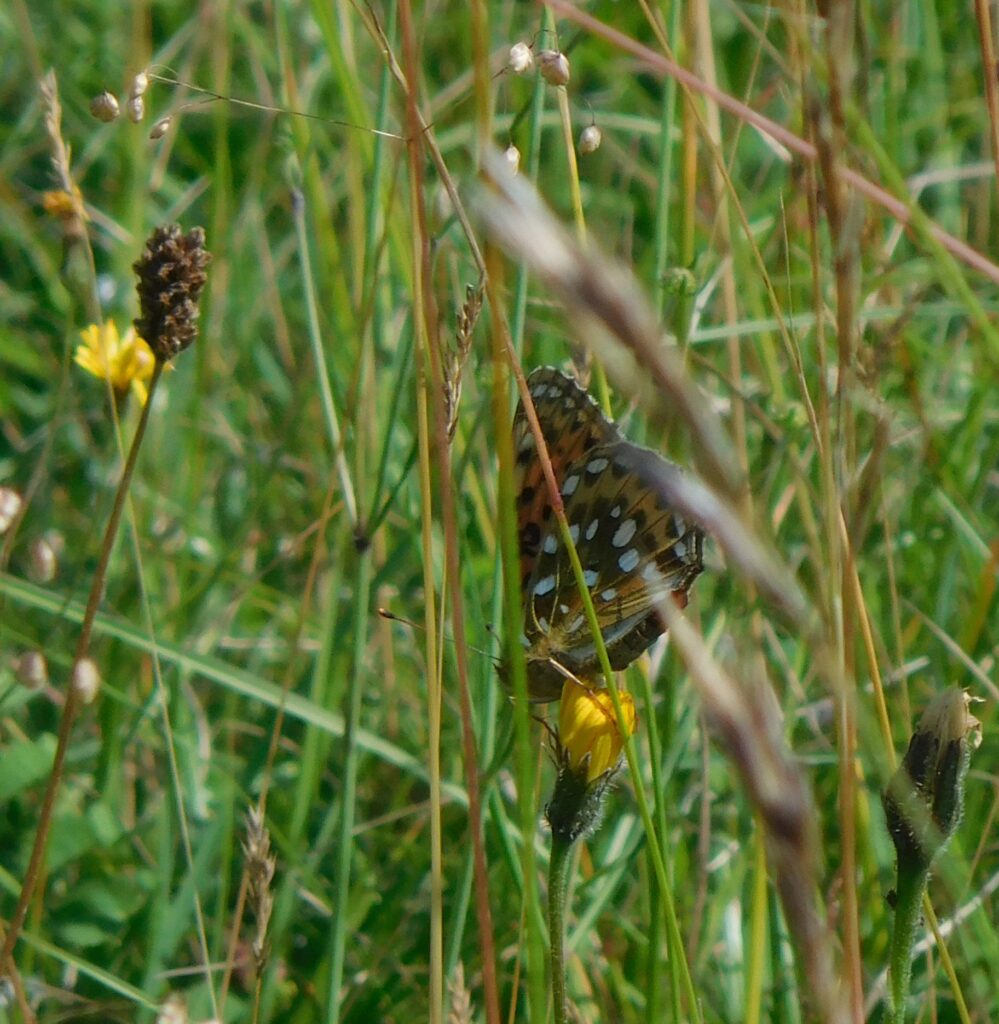
There were also Small Whites, Meadow Browns, Gatekeepers, Small Skippers, and possibly Chalkhill Blues about.

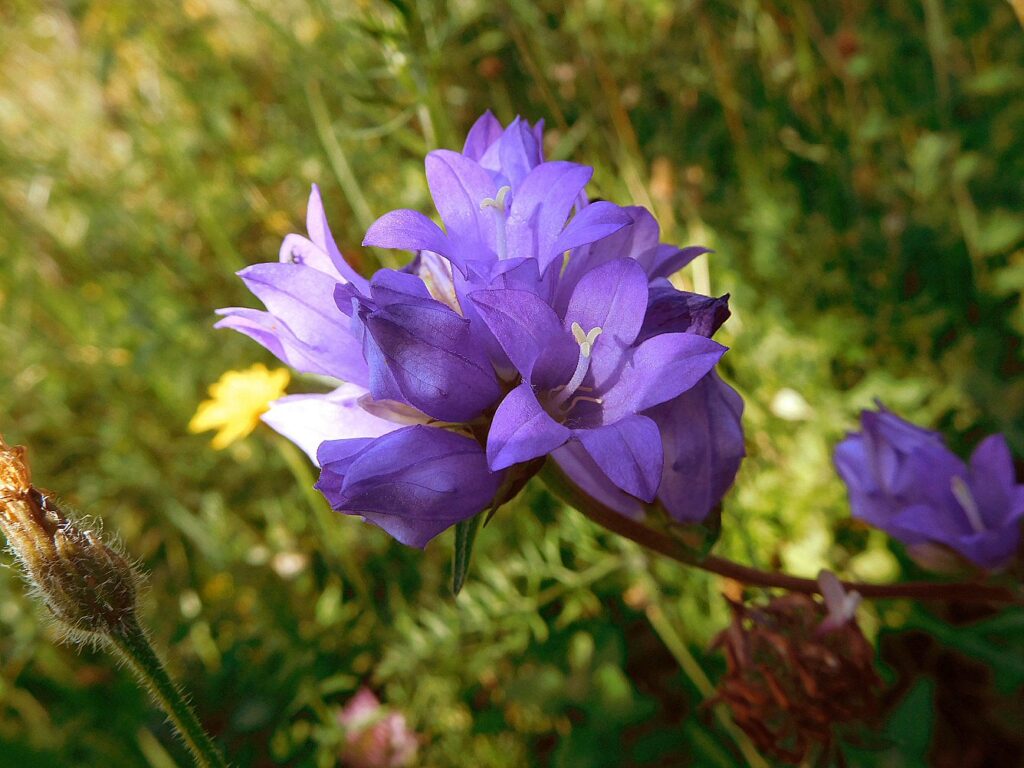











There were also Small Whites, Meadow Browns, Gatekeepers, Small Skippers, and possibly Chalkhill Blues about.


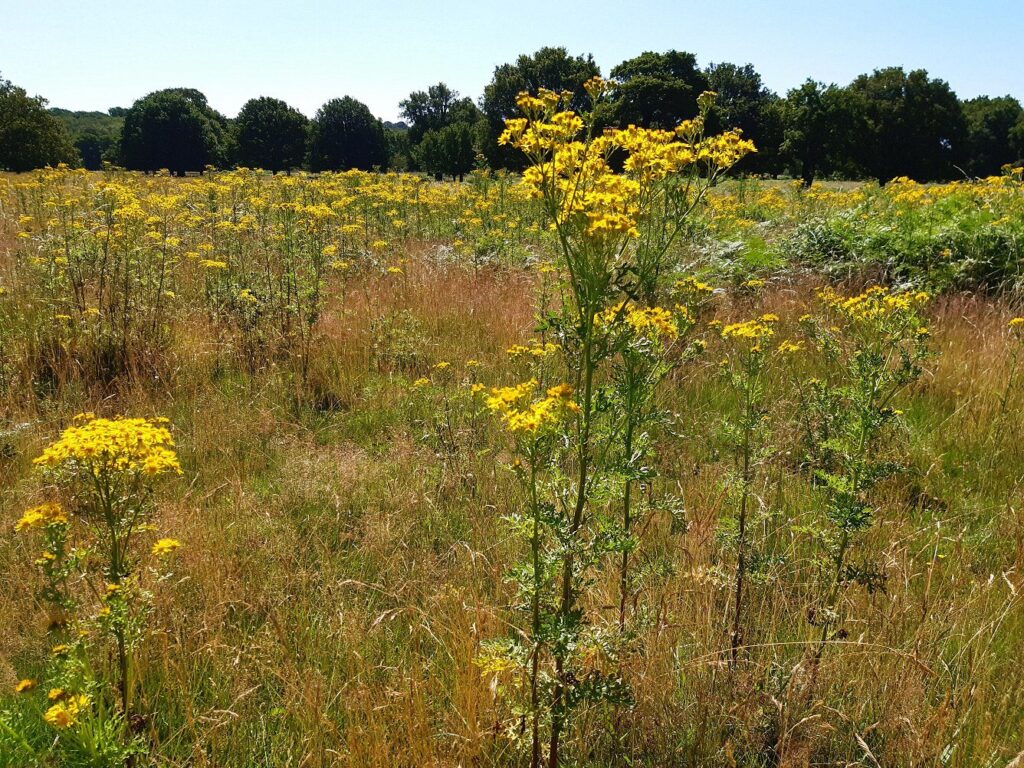
Ragwort by the thousand … and as yet hardly any Cinnabar Moth caterpillars. But I’m getting ahead of myself.
Ragwort is not just a common weed, but a curious one. It used to be a Notifiable Weed to the Ministry of Agriculture and Fisheries (more Ag. than Fish., probably). This was because it gave livestock that incautiously ate it, fresh or in hay, a violent stomach upset and sometimes caused death. So, farmers were obliged to report it and destroy it.
Why so dangerous? It contains Cardiac Glycosides, yup, chemicals that interfere with heart rhythms. Presumably natural selection has favoured this as animals end up not eating too much of the plant, which favours its survival. That includes cows and most insects.
However, a few beasties can tolerate the poison; and the Cinnabar Moth is one such. Actually, it goes a step further — it benefits from the stuff. Its caterpillars are large, conspicuous, and slow-moving; they’re also striped brilliant orange and black, warning coloration. That says “eat me, you’ll regret it”, and it’s an honest signal; any bird that tries it will indeed be violently sick, at least, and won’t try eating larvae that look like that again. Ever.
However however, one bird can tolerate the poisonous caterpillars: the Cuckoo. It arrives and feasts on the conspicuous and presumably delicious, nutritious larvae which nobody else will touch with a bargepole and rubber gloves.
Even more however, there’s a catch. The caterpillars are Very Hungry (this is a literary reference). They munch through the Ragwort like there’s no tomorrow, until it’s all gone. Then they pupate, turn into beautiful cinnabar-red and grey adults, lay eggs, and die. The Ragwort is already dead, obviously. And Cuckoos and everyone else who comes alone the next year won’t find a Ragwort plant or a Cinnabar moth for love nor money.
Then, gradually, a few surviving seeds grow into Ragwort plants. There are no Cinnabar caterpillars to do the damage on them. They go forth and multiply, as the bible has it. After a year or two there are Ragwort to the Left, Ragwort to the Right, and Ragwort all around. The man at the Min. of Ag. and Fish (or whatever it’s now called) spends all day answering phone calls about Ragwort (only he doesn’t, he’s got fed up of doing it by now). The few Cinnabar caterpillars have food in plenty and they breed like rabbits. Well, like Cinnabar moths. And the cycle goes round again.
So there you have it. Plague of Ragwort? Don’t tell the Ministry, but do wonder at the power of Nature.
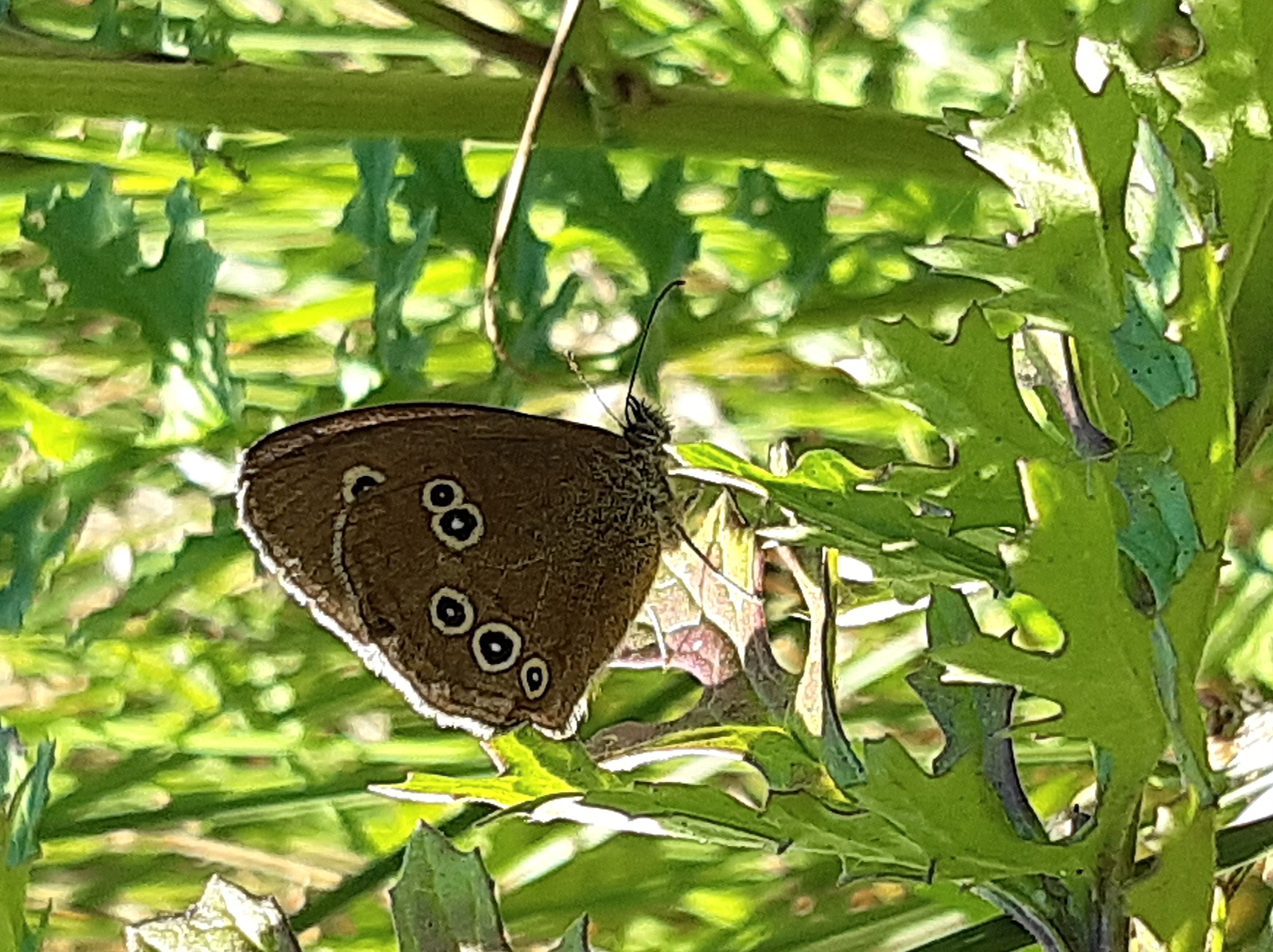
P.S. It was a lovely day for butterflies, too, with Small Coppers nectaring on Ragwort flowers; Ringlets by the Pen Ponds; Small Heaths knocking seven bells out of each other; and (Cabbage) Whites and Red Admirals about too. Grasshoppers skipped about; a Lizard ran across a path into the grass. A big flock of Canada Geese, with a few Greylags, grazed peacefully. Ants rebuilt their flooded-out nests.
